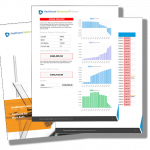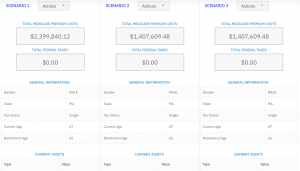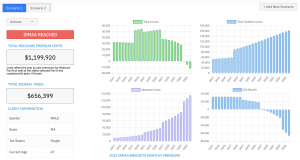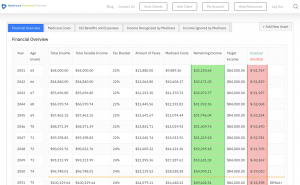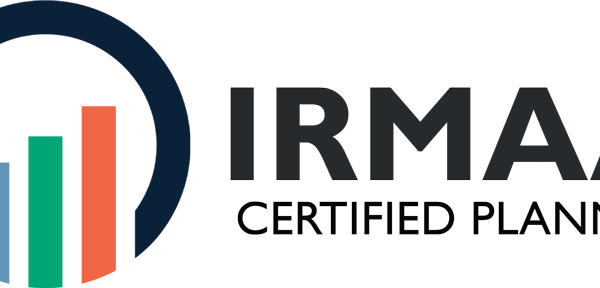Imagine standing at the foot of a towering mountain named “is Medicare Part B tax deductible”, wondering how to start your climb. It’s not Everest, but it can be daunting nonetheless.
You’ve heard whispers about medical expenses and deductions, about monthly premiums affecting adjusted gross income. But you’re left grappling with questions: How does it all work? Where do I even begin?
Let’s go into some unfamiliar areas. We’ll decode the eligibility criteria for Medicare Part B and decipher income-related monthly adjustments. Plus, we’ll explore how itemized deductions impact your taxes.
Is Medicare Part B really tax-deductible?
Understanding Medicare Part B and Tax Deductibility
When it comes to health care costs, every bit of help counts. That’s why understanding the ins and outs of Medicare Part B can make a big difference. Let’s begin by exploring the details of this program.
Medicare Part B, also known as medical insurance, covers certain doctors’ services, outpatient care, medical supplies, and preventive services. You might be wondering – how much does it cost? The answer depends on your income; however, typically beneficiaries cover around 15% of their overall Medicare costs with monthly premiums.
The Link Between Taxes and Medical Expenses
Taxes are rarely fun to deal with but they’re an integral part of our financial lives. When dealing with medical expenses like those from Medicare Part B premiums paid out-of-pocket or long-term care costs related to specific conditions you may ask if these are tax deductible?
The simple answer is yes – in some cases. For many folks filing federal income tax returns who itemize deductions instead of taking the standard deduction amounts could include these payments under eligible health insurance expenses. But there’s a catch: Only that portion exceeding 7.5% of your adjusted gross income (AGI) will count towards the deduction for any given tax year.
Navigating Income-Related Monthly Adjustment Amounts (IRMAA)
If you have high-income based on modified adjusted gross numbers reported two years ago then get ready for IRMAA – Income-related monthly adjustment amounts – which means paying more for your Medicare coverage including part b premium amount than lower-income beneficiaries would pay premiums due to higher incomes within defined brackets set by Social Security Administration guidelines annually updated. The IRMAA determination is based on income from two years prior to your current enrollment period.
As the days to your enrollment period approach, it’s vital to understand the costs you will face, including the Part B deductible. Each period of coverage by Medicare Part B begins after you’ve met this deductible.
Self-employed individuals have something to be cheerful about with regards to IRMAA – they can deduct all Medicare premiums from their federal taxes, thus decreasing the total amount of money paid for medical care. They can deduct all Medicare premiums from their federal taxes, effectively lowering the total out-of-pocket medical expenses.
Can All Medical Expenses Be Deducted?
Eye exams might qualify, other expenses may not. It’s crucial to understand the guidelines before claiming deductions on your tax return.
Key Takeaway:
Understanding Medicare Part B’s tax implications can save you money. The cost of your premiums might be deductible if you itemize deductions and your total medical expenses exceed 7.5% of adjusted gross income (AGI). High-income earners may pay more due to IRMAA, but self-employed individuals can deduct all their Medicare premiums.
Eligibility and Costs Associated with Medicare Part B Premiums
If you’re pondering over the eligibility for Medicare Part B, let’s make it simple. The program is open to U.S. US citizens or permanent residents aged 65 and above are eligible for Medicare Part B, as well as younger individuals with disabilities and those suffering from ESRD. It likewise caters to those with certain disabilities and ESRD who are younger than 65. This eligibility kicks in after you’ve gone through the necessary medicare enrollment periods.
You might be wondering about the costs involved. Well, most people pay a standard monthly premium for Medicare Part B. In 2023, this amount is $148.50 per month but can vary based on your income. Once your medicare enrollment is processed, remember to meet your Medicare Part B deductible each year to maintain continuous coverage.
Income-Related Monthly Adjustment Amounts (IRMAA)
In addition to the standard premium, high-income beneficiaries may have an extra charge called Income-Related Monthly Adjustment Amounts (IRMAA). This essentially means if your modified adjusted gross income exceeds a certain threshold, you’ll need to pay more in Medicare premiums.
To give you some perspective – as per IRS rules if single taxpayers reported more than $88k in annual earnings or joint tax filers had incomes above $176k, they’d be considered ‘high earners’ thus triggering IRMAA charges.
Now don’t panic. Even though these additional amounts might seem daunting at first glance, keep in mind that they only affect around 7% of all Medicare beneficiaries according to official data from CMS.
The Silver Lining: Tax Deductions.
Fear not. There’s good news too amidst these payments. If you’re self-employed and paying for your own health insurance including Medicare premiums like many other Americans do, then there are deductions available that can lighten this financial load substantially.
HealthInsurance.org reports that self-employed individuals can deduct all Medicare premiums from their federal taxes.
This relief isn’t limited to just Part B either; it extends across the board covering your Medicare Part A, Medicare Part C (Medicare Advantage), and even your prescription drug plan costs under Medicare Part D.
Key Takeaway:
Medicare Part B is available to U.S. citizens or permanent residents aged 65 and above, as well as younger individuals with certain disabilities and those with ESRD. Most people pay a standard monthly premium, but high-income earners may have extra charges (IRMAA). But don’t worry. If you’re self-employed, all Medicare premiums – not just the base ones – could potentially be tax-deductible. This might help lighten your financial load.
How to Determine if Your Medicare Part B Premiums are Tax Deductible
If you’re a recipient of Medicare Part B, one query that could arise is whether your premiums are capable of being subtracted from your taxes. The answer? It depends on several factors.
The Role of Itemized Deductions
In the realm of tax returns, itemized deductions play a significant role. They let you deduct certain expenses from your taxable income and potentially lower what you owe. Medical expenses fall into this category but there’s a catch.
To start with, only medical costs exceeding 7.5% of your adjusted gross income (AGI) can be claimed as an itemized deduction. For instance, if your AGI is $50,000 for the tax year in question and all eligible health care costs total $6,000 – it falls short by $1,250 ($50k x 0.075 = $3750). So no deduction here.
This threshold applies even when considering deductible Medicare premiums including those for Medicare Part B services like doctor visits or outpatient therapy which form part of out-of-pocket medical expenses.
Your Filing Status Matters Too.
Tax filing status impacts how much standard deduction amounts to – single filers get less than married ones filing jointly. If these amounts exceed what itemizing would save then taking the standard route may make more sense.
A Special Case: Self-Employed Individuals
But wait. What about self-employed folks? They have different rules when it comes to deducting health insurance costs including their Medicare premiums tax liability reduction.
In fact they don’t need to itemize deductions nor meet the 7.5% AGI threshold. Instead, they can directly subtract premiums paid from their income on line 29 of Schedule 1 attached to their federal income tax return.
Income-Related Monthly Adjustment Amounts (IRMAA)
For those who are high-income beneficiaries, you’re likely familiar with IRMAA. This leads to a rise in your monthly expenses.
Key Takeaway:
Figuring out if your Medicare Part B premiums are tax deductible can feel like a puzzle. Remember, only medical costs above 7.5% of your adjusted gross income qualify for itemized deductions – including part B services. Your filing status and whether you’re self-employed also play big roles in this equation.
Comparing Medicare Part B Premiums with Other Health Insurance Premiums
The cost of health insurance can be a significant expense, especially as we age. While Medicare Part B offers comprehensive coverage for medical services and supplies, its premiums may seem steep compared to other types of health insurance.
Medicare Advantage Plans and Medigap Policies
Many folks wonder how the costs stack up when comparing Medicare Advantage plans, Medigap policies (supplement plans), and traditional employer-based or individual market insurance. Let’s dive in and compare the costs.
You’ll find that unlike standard private insurances where premium amounts vary widely based on factors like age or pre-existing conditions, Medicare Part B has set monthly premiums. These are determined by your modified adjusted gross income from two years prior. This is known as an Income-Related Monthly Adjustment Amount (IRMAA).
In 2023 for example, most people paid $144.60 each month for their Medicare Part B premium but high-income beneficiaries had higher rates due to IRMAA – all the way up to $491.60 per month. You might feel like you’re getting sticker shock just reading those numbers.
To add another layer of complexity into this healthcare cake mix: self-employed individuals can actually deduct ALL their Medicare premiums including those juicy ones for part B right off their federal taxes according to this informative piece at HealthInsurance.org.
Tax implications come into play here too. With the Tax Cuts and Jobs Act increasing standard deduction amounts significantly, many found itemized deductions less beneficial. NerdWallet has a great article explaining this in more detail.
On the flip side, private insurance premiums can swing drastically based on factors like age, where you live, and your health condition. Still, if you qualify to include them as an itemized deduction or are self-employed, they may offer some tax advantages.
Key Takeaway:
While Medicare Part B premiums might be higher compared to other health insurances, they’re determined by your income from two years prior. If you have a high income, you may end up paying more due to Income-Related Monthly Adjustment Amounts (IRMAA). But there’s good news for the self-employed folks out there – all of their Medicare premiums, including those for Part B, can be fully deducted off their federal taxes.
Reporting Your Medicare Part B Premiums on Your Tax Returns
Self-employed individuals can rejoice – they may deduct their Medicare Part B premiums from their taxes. You can include all premiums paid for Medicare, including Part B, as a self-employed health insurance deduction.
You may be asking yourself: “Can I deduct my Medicare Part B premiums from my taxes?” The answer is yes. But how does this work? Let me guide you through it.
Filing Taxes as a Self-Employed Individual
The process of reporting your Medicare Part B premiums starts with Schedule A. This form allows you to list itemized deductions and calculate whether these exceed the standard deduction amounts. If they do, then itemizing becomes beneficial for you.
All out-of-pocket medical expenses fall under Schedule A, including those precious monthly adjustment amounts spent on health care costs like doctor visits or prescription medications.
In addition to these common costs, did you know that certain lesser-known expenses are also deductible? These include items such as hearing aids and long-term care insurance premiums – both critical elements of many seniors’ healthcare plans.
- Deducting Medical Expenses: When tallying up your annual out-of-pocket medical expenses (including any hair transplants or teeth whitening), don’t forget to add in those regular monthly premium payments towards original medicare coverage too. Remember though – only medical expense exceeding 7.5% of adjusted gross income can be deducted from federal income taxes.
- Tax Tips: If your modified adjusted gross is high enough to trigger an Income-Related Monthly Adjustment Amount (IRMAA), it’s important not just to pay the increased amount but also report them accurately on tax returns. This is because these IRMAA payments can be added to your total deductible medical expenses.
- Beneficiaries: For beneficiaries who receive social security benefits, Medicare Part B premiums are often deducted directly from those monthly checks. Don’t forget about them. You’ve paid those premiums too, and they’re just as eligible for the tax deduction.
It’s completely normal to feel overwhelmed sometimes. But remember, you’re not alone and there are ways to manage this feeling. Inhale deeply, we are here for you.
Key Takeaway:
For beneficiaries receiving social security benefits, it’s crucial to remember that only expenses exceeding 7.5% of your adjusted gross income can be written off. This includes Medicare Part B premiums and all out-of-pocket medical costs like hearing aids or long-term care insurance. So if you’re self-employed, make sure to take advantage of these deductions when doing your taxes.
Maximizing Your Tax Deductions with Medicare Part B Premiums
For high-income earners or those who are self-employed, it may be beneficial to examine the potential tax deductions available through Medicare Part B premiums. Why? Because these can be tax deductible. Discover techniques to reduce your total health care expenses by taking advantage of deductions.
Deducting Medicare Part B for High-Income Beneficiaries
The first step in maximizing deductions is understanding the role of Income-Related Monthly Adjustment Amounts (IRMAA). If you’re one of the Medicare beneficiaries who fall into this category, then know that IRMAA increases the monthly premium amounts for Parts B and D if your income goes over certain thresholds. But there’s good news – these increased payments are also tax-deductible.
Next up, consider itemized deductions on your federal income taxes. Medical expenses exceeding 7.5% of adjusted gross income (AGI) can be deducted as per IRS guidelines. This includes any out-of-pocket medical expenses related to necessary treatments or services not covered by Original Medicare such as dental expenses, long-term care costs, hearing aids etc., but excludes cosmetic procedures like hair removal or teeth whitening.
Tax Benefits for Self-Employed Individuals
If you’re self-employed and paying premiums for health insurance including medicare coverage out-of-pocket without help from an employer-based plan, here’s something exciting: You get special privileges when it comes to deducting healthcare premiums. As stated in IRS guidelines, self-employed individuals can deduct 100% of their health insurance premiums including Medicare Part B.
So, if you’re paying your monthly premium and meeting your medical needs without help from an employer’s plan, then here’s something important: these costs are deductible. Not only does this apply to standard Medicare Parts A and B, but it also extends to extra coverages like health insurance plans.
Key Takeaway:
If you’re a high-income Medicare beneficiary or self-employed, your Part B premiums can help reduce your tax bill. Increased payments due to IRMAA and medical expenses over 7.5% of AGI are deductible. And if you’re self-employed? You get the green light to deduct 100% of health insurance premiums, including Medicare.
FAQs in Relation to Is Medicare Part B Tax Deductible
Can you deduct Medicare Part B payments on your taxes?
You can, but only if medical expenses exceed 7.5% of your adjusted gross income and you’re itemizing deductions.
What insurance premiums are tax-deductible?
Premiums for health insurance, long-term care insurance, and self-employed folks’ Medicare are usually tax deductible.
What is the Medicare Part B annual deductible?
The Medicare Part B annual deductible in 2023 is $233 per year.
Does Medicare premiums reduce Social Security taxable income?
Nope, while deducted from your benefit check, they don’t decrease Social Security’s taxable amount.
Conclusion
Scaling the mountain of ‘is Medicare Part B tax deductible’ might have felt like a daunting task, but now you’ve made it to the summit.
You’ve navigated through complex terrains like eligibility for Medicare Part B and how income-related monthly adjustments work. You’re no longer in the dark about itemized deductions and their impact on your taxes.
Your knowledge has grown exponentially: from understanding that self-employed individuals can deduct all premiums including those for Medicare Part B, to knowing that medical expenses must exceed 7.5% of your adjusted gross income (AGI) to be deducted.
With your newfound insight, you can now not only better manage your medical expenses but also maximize the benefits of filing taxes!
Table of Contents:
- Understanding Medicare Part B and Tax Deductibility
- Eligibility and Costs Associated with Medicare Part B Premiums
- How to Determine if Your Medicare Part B Premiums are Tax Deductible
- Comparing Medicare Part B Premiums with Other Health Insurance Premiums
- Reporting Your Medicare Part B Premiums on Your Tax Returns
- Maximizing Your Tax Deductions with Medicare Part B Premiums
- FAQs in Relation to Is Medicare Part B Tax Deductible
- Conclusion
Streamlining the Medicare Surcharge Calculation Process.
Our Healthcare Retirement Planner software is designed to streamline the retirement planning process for financial professionals. By providing an efficient way to calculate IRMAA costs, our tool helps you save time and focus on other aspects of your clients’ retirement plans.
- Faster calculations: Our software quickly calculates IRMAA costs based on your client’s income and tax filing status, eliminating manual calculations and potential errors.
- User-friendly interface: The intuitive design of our platform makes it easy for financial professionals to input data and generate results with minimal effort.
- Data integration: Seamlessly integrate our calculator into your existing financial planning tools or CRM systems for a more streamlined workflow.
- Easy to Understand Reports: Export reports to easily share with your clients
- Tax and Surcharge Modeling: see how different types of income affects both taxes and your surcharges.
In addition to simplifying the calculation process, using our Healthcare Retirement Planner can also help improve communication between you and your clients. With clear visuals that illustrate how IRMAA costs impact their overall retirement plan, you can effectively convey complex information in an easily digestible format. This enables clients to make informed decisions about their healthcare expenses during retirement while ensuring they are prepared for any potential changes in Medicare premiums due to income fluctuations. To learn more about how our software can benefit both you as a financial professional and your clients’ retirement planning experience, visit the features page. Streamlining retirement planning processes can help financial professionals save time and resources, allowing them to focus on other areas of their clients’ needs. Automated calculation of IRMAA costs is the next step in streamlining this process even further.

